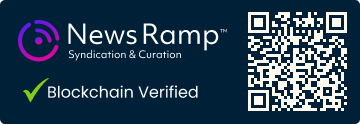Systematic Thought Leadership Strategy Drives Business Outcomes for HR Organizations

Summary
Full Article
Thought leadership represents useful insight shared by experienced professionals who help others act through opinions grounded in practical experience, serving as the foundation for content, sales conversations, and recruiting efforts. When leaders approach it systematically, they transform company perspectives into market-usable resources that drive measurable business outcomes for HR vendors and service providers.
Modern buyers conduct extensive research before engaging with sales teams, comparing frameworks and seeking clear-thinking leaders, while reporters, analysts, and job candidates follow similar patterns. This behavior pattern creates significant implications for HR industry vendors, as executives who publish steady, practical ideas experience three significant outcomes: demand increases as prospects arrive with context, reputation strengthens through media citations and backlinks, and talent quality improves as strong performers seek to learn from clear thinkers.
The effect doesn't require viral content but rather clarity, consistency, and verifiable proof. Effective thought leadership functions as a system rather than a campaign, flowing through the PESO mix where each channel serves specific purposes. Paid channels target defined audiences when speed matters, earned media proves ideas through independent coverage, shared content brings ideas into community conversations, and owned material provides citable, trustworthy source content.
When these elements reinforce each other, brands transition from sounding like sales pitches to becoming authoritative sources that AI assistants frequently reference in responses. Thematic selection should align with business goals, focusing on three consistent lanes per quarter: addressing market shifts buyers must navigate, describing internal decision frameworks, and highlighting measurable customer outcomes.
C-suite members should share ownership with CEOs addressing vision and talent philosophy, CFOs covering capital discipline, COOs demonstrating reliability, CIOs/CTOs explaining technical decisions, CMOs focusing on demand patterns, and CHROs connecting culture to retention. This distributed leadership approach ensures comprehensive coverage of topics relevant to HR vendors and their clients.
Practical examples include Matter Family Office's Thierry Brunel outlining five investment habits for long-term wealth building and Sequel Brands' Anthony Geisler advocating for movement-centered health strategies with concrete national implementation steps. Teams can maintain effective cadences with one original weekly piece per executive, two thoughtful weekly comments on relevant threads, monthly short videos or audio notes, and quarterly anchor pieces that consolidate themes.
A 30-day implementation plan involves defining purpose and themes in week one, publishing content and building resources in week two, proving concepts through media pitches and verifiable details in week three, and reviewing results to refine approach in week four. CEOs should personally own their unique perspectives, speaking in first person about risks, tradeoffs, and lessons while inviting questions to establish authentic leadership voices that set organizational tone and provide insight into their thinking processes.

This story is based on an article that was registered on the blockchain. The original source content used for this article is located at citybiz
Article Control ID: 186802